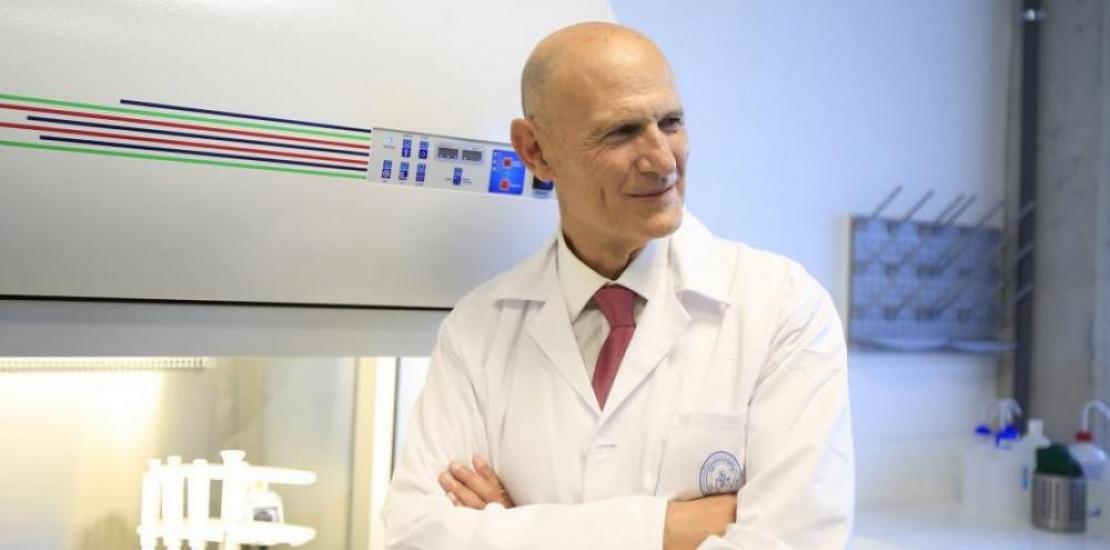Izpisua identifies a new target for reversing premature ageing
The scientific team led by Juan Carlos Izpisua, professor of Developmental Biology at UCAM, has discovered a type of RNA which accumulates in the cell nucleus of people who suffer from premature ageing or progeria. Blocking this RNA reverses the symptoms of this disease and prolongs lifespan in mice.
The outcomes that have been published in the journal Science Translational Medicine derive from one of the projects developed by Dr. Izpisua, promoted and funded by UCAM, which focusses on the study of an RNA fragment known as LINE-1.
“These findings provide new insight into progeroid syndromes and how to treat them, while emphasising the relevance of LINE-1 RNA in the process of normal ageing,” states Dr. Izpisua Belmonte, Professor of Developmental Biology at UCAM, professor in the Laboratory of Gene Expression at Salk Institute and director of the Altos Science Institute Labs in San Diego, California.
Progeroid syndromes, which include Hutchinson-Gilford syndrome and Werner syndrome, lead to accelerated ageing in children and teenagers. Patients do not only develop a striking physical appearance but also symptoms and diseases typically associated with ageing, such as heart diseases, cataracts, type 2 diabetes, osteoporosis, and cancer. There is currently no effective treatment for these syndromes and people suffering from them end up dying within a few years.
Izpisua Belmonte and his team were aware that one of the molecular characteristics of both normal ageing and progeroid syndromes is the altered organisation of DNA in the cell nucleus. When DNA is packaged differently, the genes accessible for the cell to read change, and therefore cell behaviour and function change dramatically. They also knew that the human genome contains hundreds of DNA fragments which spread and move through the genome, as well as encoding LINE-1 RNA. The function of these elements is barely known, but they change and multiply with age or diseases, such as cancer and cardiovascular diseases. Researchers wondered whether these elements also changed and built up in progeroid syndromes.
“The repeated sequences in DNA, such as LINE-1, make up a large percentage of our genome. However, little attention has been paid to the effects that the accumulation of this synthesised LINE-1 RNA in the cell nucleus, which increases with age, can have, so far.” explains Pradeep Reddy, scientist at Salk Institute and Altos Labs.
In this work, researchers studied cells from patients with progeroid syndromes and found that they had four to seven times more LINE-1 RNA than cells from healthy individuals. Moreover, they showed that the build-up of this LINE-1 RNA occurred before major structural changes in DNA associated with progeria happened.
“Thus, we developed a series of molecules which could specifically bind to LINE-1 RNA, blocking it and preventing it from building up and affecting cell function. This type of treatment reverted molecular signs of progeria in isolated cells and lengthened the lives of mice with genetic mutations which cause premature ageing,” said Estrella Núñez, Vice-Rector of Research at UCAM and co-author of the study. In both cases, the expression of genes associated with cell growth and DNA structure increased after treatment, whereas the gene expression associated with ageing, inflammation and DNA damage decreased.
“Targeting LINE-1 RNA could be an effective way to treat progeroid syndromes, as well as other age-related diseases which have been associated with LINE-1, including neuropsychiatric, ocular, metabolic disorders or cancer,” says Izpisua Belmonte. “Eventually, we believe that this approach can lead to treatments which help to lengthen human health during ageing.”
Researchers are contemplating future studies to better understand what causes the accumulation of LINE-1 RNA and how it can be prevented with drugs in humans.
Other authors of this study are Javier Prieto Martínez and Alejandro Ocampo, from Salk Institute; Mako Yamamoto and Concepción Rodríguez Esteban, from Salk Institute and Altos Labs; Peng Liu, Dalila Bensaddek, Huoming Zhang, Leila Abassi, Mirko Celii, Arianna Mangiavacchi, Valerio Orlando and Francesco Della Valle, from KAUST; Alfonso Saera and Riccardo Aiese Cigliano from Sequentia Biotech; Estrella Núñez Delicado from Universidad Católica San Antonio de Murcia (UCAM); and Steve Horvath from Altos Labs.
The study was partially funded by the King Abdullah University of Science and Technology (KAUST) of Saudi Arabia (BAS/1/01-01), the KAUST Competitive Research Grants Programme, the KAUST Smart-Health Initiative, the Moxie Foundation, and the Universidad Católica San Antonio de Murcia (UCAM).
For more information:
Science Translational Medicine




